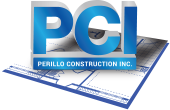Modern office design goes beyond functionality and aesthetics—it also prioritizes the well-being of employees. Research consistently shows that thoughtfully designed work environments can reduce stress, boost productivity, and improve job satisfaction. As the workplace evolves, businesses are recognizing the value of creating spaces that nurture both physical and mental health. These designs not only contribute to employee happiness but also enhance recruitment, retention, and overall company culture. Architectural features play a critical role in creating spaces that promote comfort, creativity, and collaboration. From natural light to ergonomic layouts, these elements can transform workplaces into hubs of comfort and innovation.
Natural Light and Views of Nature
One of the most impactful architectural features for employee well-being is the inclusion of natural light. Exposure to sunlight helps regulate circadian rhythms, improving sleep quality and overall mood. Offices with large windows, skylights, or open layouts that maximize daylight can reduce eye strain and enhance focus.
Beyond natural light, providing views of nature further supports employee well-being. Architectural designs that incorporate windows overlooking greenery or outdoor spaces create a calming environment. Studies have shown that even brief exposure to natural elements can reduce stress and improve mental clarity.
Open and Flexible Layouts
Flexible office layouts that balance open spaces with private areas cater to diverse work styles and enhance well-being. Open spaces encourage collaboration and teamwork, while quiet zones and private offices allow employees to focus on tasks without distractions.
Architectural designs that emphasize flexibility often feature movable walls, modular furniture, and multi-purpose rooms. These adaptable spaces give employees the freedom to choose their work environment based on their needs, fostering a sense of control and autonomy.
Biophilic Design: Bringing Nature Indoors
Biophilic design incorporates natural elements into the built environment, promoting a connection to nature. This design approach includes features such as indoor plants, green walls, water features, and natural materials like wood and stone.
Incorporating biophilic elements into office architecture can reduce stress, enhance creativity, and improve air quality. Employees in biophilic spaces often report higher levels of satisfaction and engagement, making it a powerful tool for creating healthier workplaces.
Ergonomic Design Principles
Ergonomics is a key consideration in office architecture that directly impacts employee comfort and health. Features like adjustable desks, properly positioned lighting, and supportive seating can reduce physical strain and prevent injuries such as back pain or repetitive stress injuries.
Architectural designs that prioritize ergonomic principles ensure that workstations are adaptable to different body types and work styles. Providing standing desks, ergonomic chairs, and collaborative spaces with comfortable seating helps employees maintain better posture and reduce fatigue.
Quiet Zones and Acoustic Considerations
Noise is a common workplace distraction that can negatively affect concentration and well-being. Architectural features that address acoustics, such as sound-absorbing materials, strategically placed partitions, and acoustic panels, can create quieter work environments.
Quiet zones designed for focused tasks or relaxation are another important architectural feature. These areas provide employees with a retreat from the hustle and bustle of the office, allowing them to recharge and maintain productivity throughout the day.
Collaborative Spaces and Social Hubs
While quiet areas are essential, so are spaces that encourage collaboration and social interaction. Architectural designs that include well-thought-out meeting rooms, breakout areas, and lounges foster teamwork and creativity.
Social hubs, such as kitchens or coffee stations, encourage casual interactions that build relationships and strengthen workplace culture. These communal spaces can also reduce stress by providing employees with opportunities to connect and unwind during the workday.
Access to Outdoor Areas
Incorporating outdoor spaces into office design can significantly enhance employee well-being. Rooftop gardens, terraces, or courtyards provide employees with fresh air and a change of scenery, promoting relaxation and mental clarity.
Architectural designs that integrate access to outdoor areas encourage employees to take breaks, which can lead to improved focus and reduced burnout. Outdoor spaces can also serve as venues for informal meetings or team-building activities, adding versatility to the workplace.
Energy-Efficient and Sustainable Features
Sustainability in office design not only benefits the environment but also enhances employee well-being. Features like energy-efficient HVAC systems, natural ventilation, and eco-friendly building materials create healthier indoor environments.
Architectural designs that prioritize sustainability also demonstrate a company’s commitment to corporate responsibility, which can boost employee pride and satisfaction. Green certifications like LEED (Leadership in Energy and Environmental Design) further reinforce the value of sustainable workplace architecture.
Designing for Health and Happiness
Architectural features that prioritize employee well-being are essential for creating a productive and positive workplace. By incorporating natural light, flexible layouts, biophilic elements, and ergonomic designs, businesses can foster an environment that supports physical and mental health. Additionally, features like quiet zones, outdoor spaces, and sustainable systems contribute to a well-rounded design that enhances both comfort and functionality.
For businesses seeking to design or renovate office spaces that promote well-being, partnering with professionals who specialize in creating employee-focused environments is key. Perillo Construction works with clients to transform their vision into reality, ensuring that every architectural feature aligns with the goal of fostering a healthy and productive workplace. To learn more, visit Perillo Construction’s Contact Us page.

